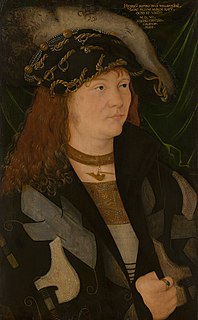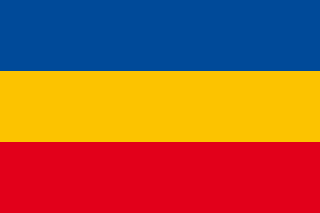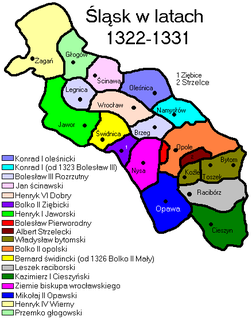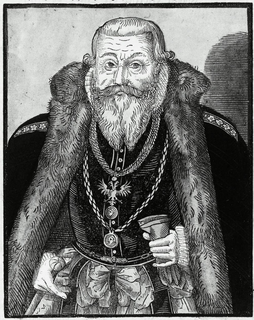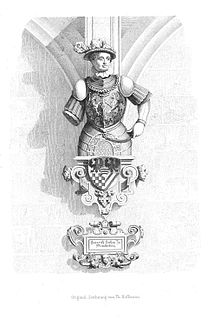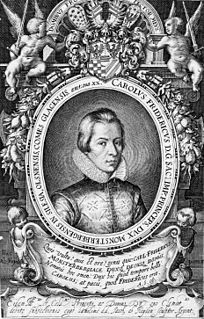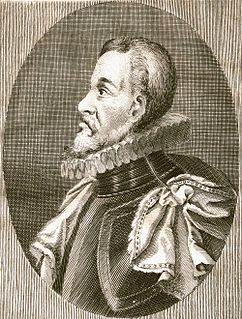| Henry II of Münsterberg-Oels | |
|---|---|
| Born | 29 March 1507 |
| Died | 2 August 1548 (aged 41) Bierutów |
| Noble family | House of Poděbrady |
| Spouse(s) | Margaret of Pernstein Margaret of Mecklenburg-Schwerin |
| Father | Charles I, Duke of Münsterberg-Oels |
| Mother | Anna of Sagan |
Henry II of Münsterberg-Oels (also known as:Henry II of Poděbrady, German : Heinrich II. von Münsterberg-Oels or Heinrich II. von Podiebrad, Czech : Jindřich II. Minstrbersko-Olešnický; 29 March 1507 – 2 August 1548, Bierutów) was from 1536 to 1542 Duke of Münsterberg and of Oels (Oleśnica) and from 1542 to 1548 Duke of Bernstadt (Bierutów). He also held the title of Count of Glatz (Kladsko), though he never actually ruled the County itself.

German is a West Germanic language that is mainly spoken in Central Europe. It is the most widely spoken and official or co-official language in Germany, Austria, Switzerland, South Tyrol (Italy), the German-speaking Community of Belgium, and Liechtenstein. It is also one of the three official languages of Luxembourg and a co-official language in the Opole Voivodeship in Poland. The languages which are most similar to German are the other members of the West Germanic language branch: Afrikaans, Dutch, English, the Frisian languages, Low German/Low Saxon, Luxembourgish, and Yiddish. There are also strong similarities in vocabulary with Danish, Norwegian and Swedish, although those belong to the North Germanic group. German is the second most widely spoken Germanic language, after English.

Czech, historically also Bohemian, is a West Slavic language of the Czech–Slovak group. Spoken by over 13 million people, it serves as the official language of the Czech Republic. Czech is closely related to Slovak, to the point of mutual intelligibility to a very high degree. Like other Slavic languages, Czech is a fusional language with a rich system of morphology and relatively flexible word order. Its vocabulary has been extensively influenced by Latin and German.
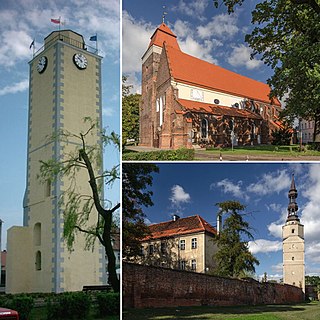
Bierutów is a town in Oleśnica County, Lower Silesian Voivodeship, in south-western Poland. It is the seat of the administrative district (gmina) called Gmina Bierutów. The town lies approximately 13 kilometres (8 mi) south-east of Oleśnica, and 35 kilometres (22 mi) east of the regional capital Wrocław.





